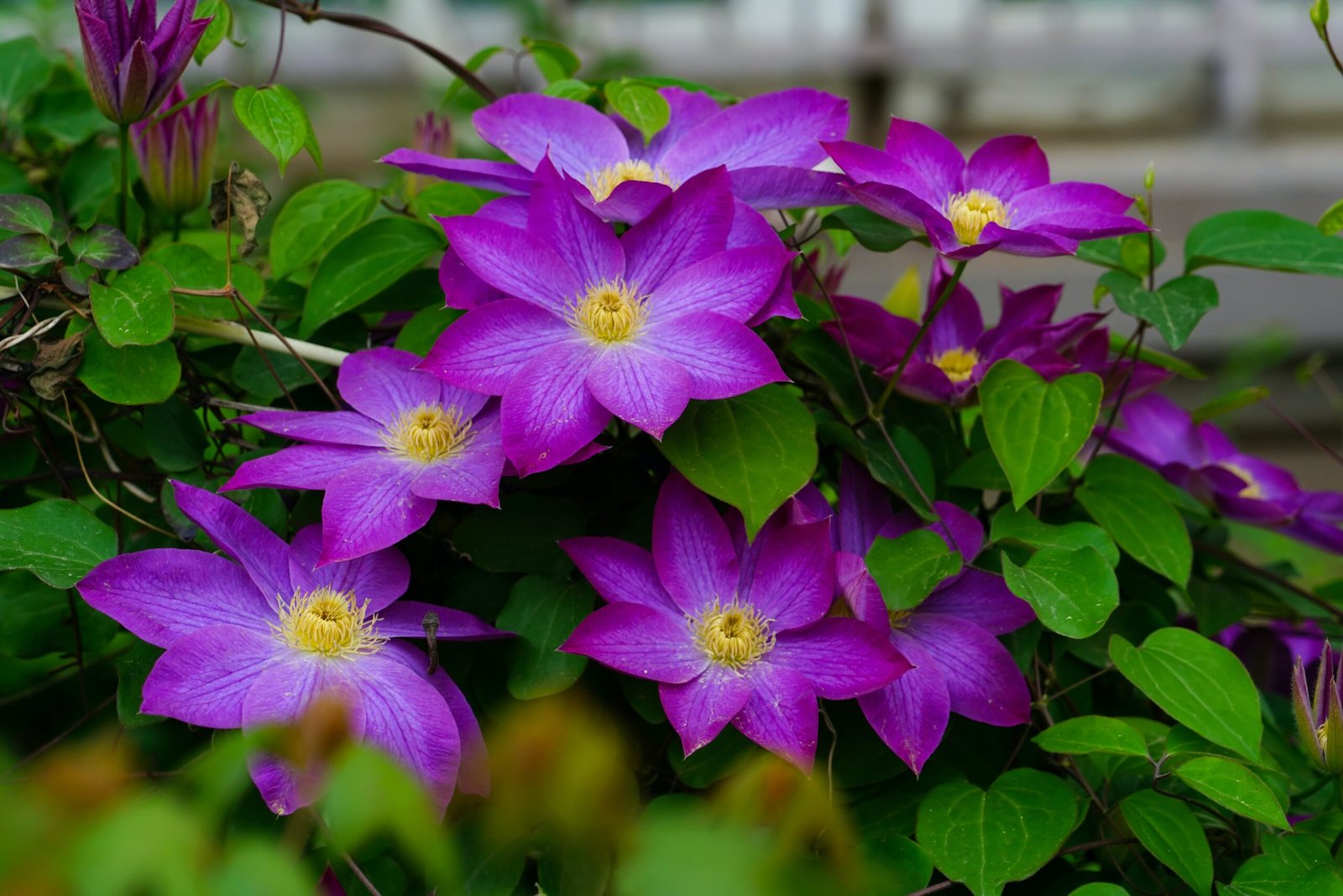- Lotus: How to Plant, Grow and Care for Lotus - 3 November 2023
- Zinnia: How to Plant, Grow and Care for Zinnia - 3 November 2023
- Coreopsis: How to Plant, Grow and Care for Coreopsis - 3 November 2023
The Clamatis plant is a stunning flowering vine that adds beauty and vibrant color to any garden or landscape. With its large, showy flowers in a variety of colors and its ability to climb and cover structures, the Clamatis is a popular choice for garden enthusiasts. Whether used to cover fences, trellises, or arbors, this versatile plant is sure to make a statement in any outdoor space.
About Clamatis:
Clamatis is a versatile plant with various types including early, late, and evergreen varieties. These different types offer a range of bloom colors, sizes, and growth habits, giving gardeners plenty of options to choose from.
The life cycle of Clamatis varies depending on the specific type and growing conditions. Some varieties are perennial, while others are annual or biennial. Clamatis generally blooms in the spring or summer, adding a burst of color to the garden.
Characteristics:
Clamatis plants are known for their ability to attract bees, butterflies, and hummingbirds with their vibrant blooms. They are relatively easy to grow and maintain, making them a popular choice among gardeners. While Clamatis is not edible, some varieties may have a pleasant fragrance. Additionally, certain types of Clamatis have an extended bloom time, providing gardeners with beautiful flowers for an extended period. The plant is often used for its ornamental value, as it adds visual interest to fences, trellises, and arbors. It is also a fast-growing plant, quickly filling in empty spaces in the garden.
Growing Conditions:
Clamatis thrives in well-draining soil and prefers full sun to part shade exposure. It is important to provide support such as a trellis or fence for the vines to climb. The plant requires regular watering, especially during dry periods, to ensure healthy growth.
Resistance:
Clamatis plants are generally not favored by deer and rabbits, making them resistant to damage from these animals. However, they can be susceptible to diseases such as rust, fusarium wilt, downy mildew, and powdery mildew, depending on the specific type and growing conditions. It is important to monitor the plants and take appropriate measures to prevent or treat any potential issues.
“`html
| Season | Depth | Height | Spacing | US Hardiness Zone |
|---|---|---|---|---|
| Spring | 2 to 4 inches | 6 to 12 feet | 36 to 48 inches | 4 to 9 |
“`
Remember, Clematis plants thrive best when their roots are in the shade and their flowers in the sun. They also require well-drained soil. For the best results, plant them in the spring, about 2 to 4 inches deep. With proper care, these plants can grow up to a height of 6 to 12 feet. Give them plenty of room to grow by spacing each plant 36 to 48 inches apart. These plants are hardy and can survive in US Hardiness Zones from 4 to 9.
Plant Care Instructions
Light Requirement
Clamatis plants thrive in full sun to partial shade. However, they can also tolerate full shade in some cases.
Water Need
Clamatis plants require regular watering to keep the soil moist. However, it’s important to avoid overwatering as it can lead to root rot. Allow the top inch of soil to dry out between waterings.
Fertilizer
Clamatis plants prefer a balanced fertilizer, such as a 10-10-10 or 20-20-20. For an organic option, you can use compost or an organic granular fertilizer.
Pruning
Prune Clamatis plants in early spring before new growth starts. Remove any dead or damaged stems and shape the plant as desired. Additionally, prune lightly after the first flush of blooms to encourage a second bloom later in the season.
Toxicity
Clamatis plants are considered mildly toxic if ingested by humans or pets. It’s best to keep them out of reach of children and animals.
Common Issues
Common issues with Clamatis plants include wilting, fungal diseases, and pest infestations. Proper watering, good air circulation, and regular inspection for pests can help prevent these problems. If necessary, use appropriate treatments to control pests or diseases.
Culinary Benefits:
- Clematis flowers can be used in cooking to add a unique twist to dishes. They can be used to garnish salads, desserts, and cocktails.
- The petals of certain clematis varieties are edible and can be used to create beautiful decorations for cakes and pastries.
- Clematis leaves can be used as a wrapping for steamed fish or vegetables, infusing a delicate flavor into the dish.
- Some clematis species have a lemony taste that can be used to enhance the flavor of soups, stews, and sauces.
Medicinal Benefits:
- Clematis has been used in traditional medicine for its anti-inflammatory properties. It can be used to alleviate pain and reduce swelling.
- The plant is believed to have diuretic properties, which can aid in flushing out toxins from the body and promoting kidney health.
- Clematis extracts have shown potential in supporting the immune system and fighting off common infections.
- Some studies suggest that clematis may have anti-cancer properties, although more research is needed to confirm this.
- Applying clematis poultices or creams topically can help in healing wounds, burns, and skin irritations.

